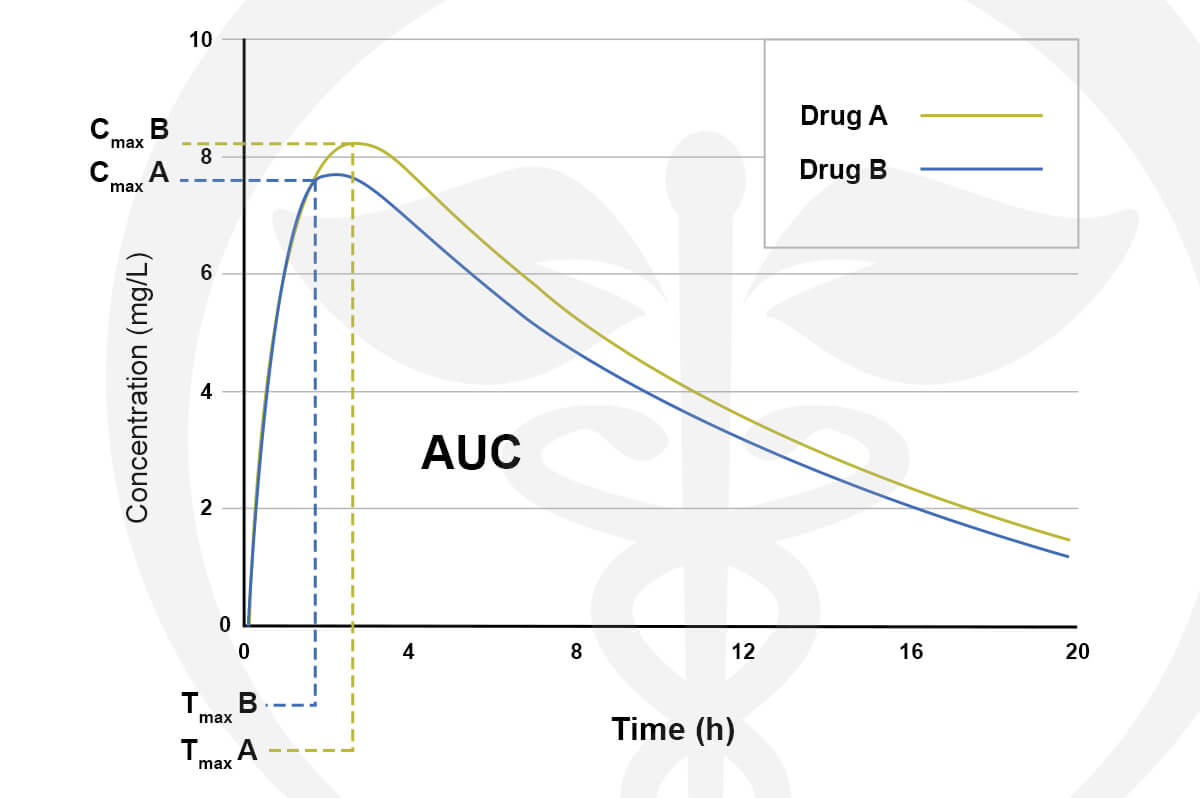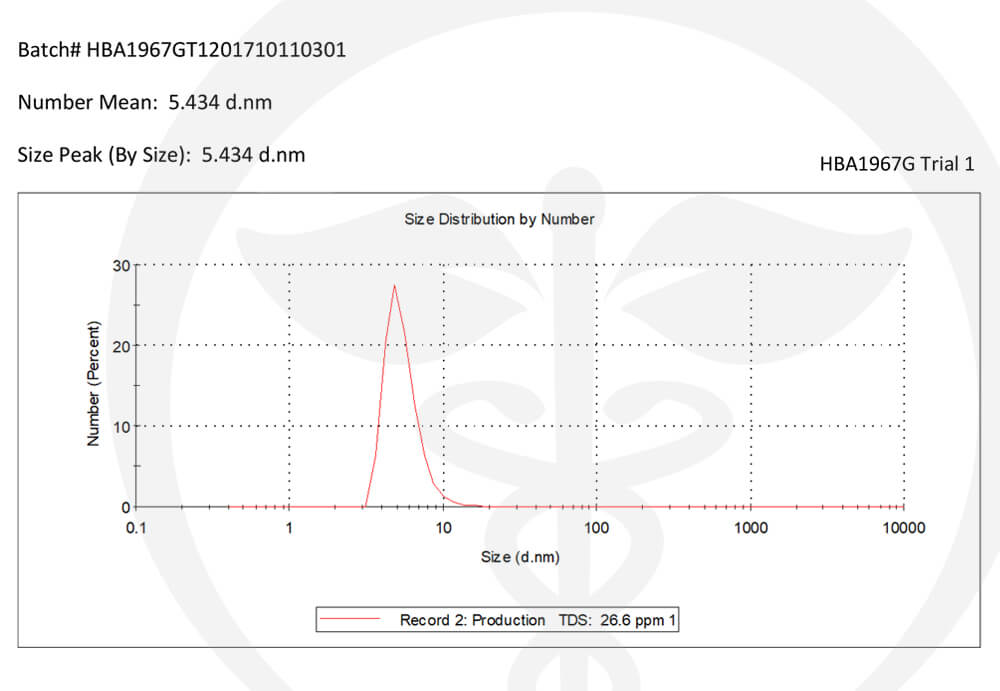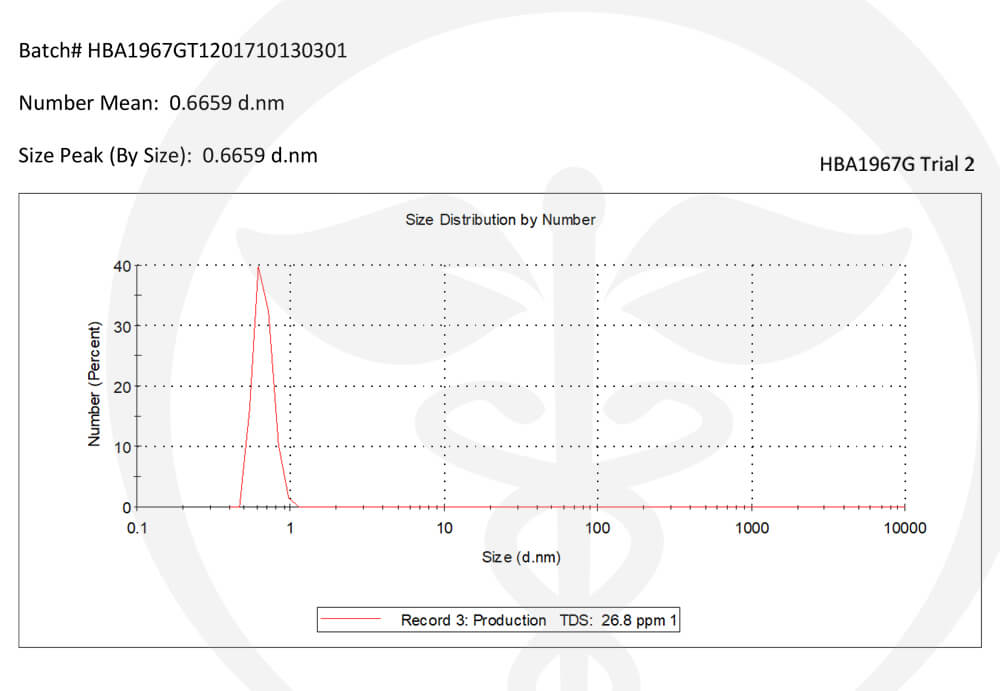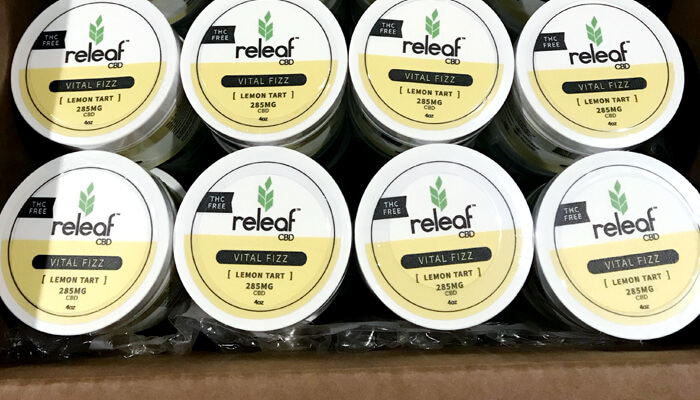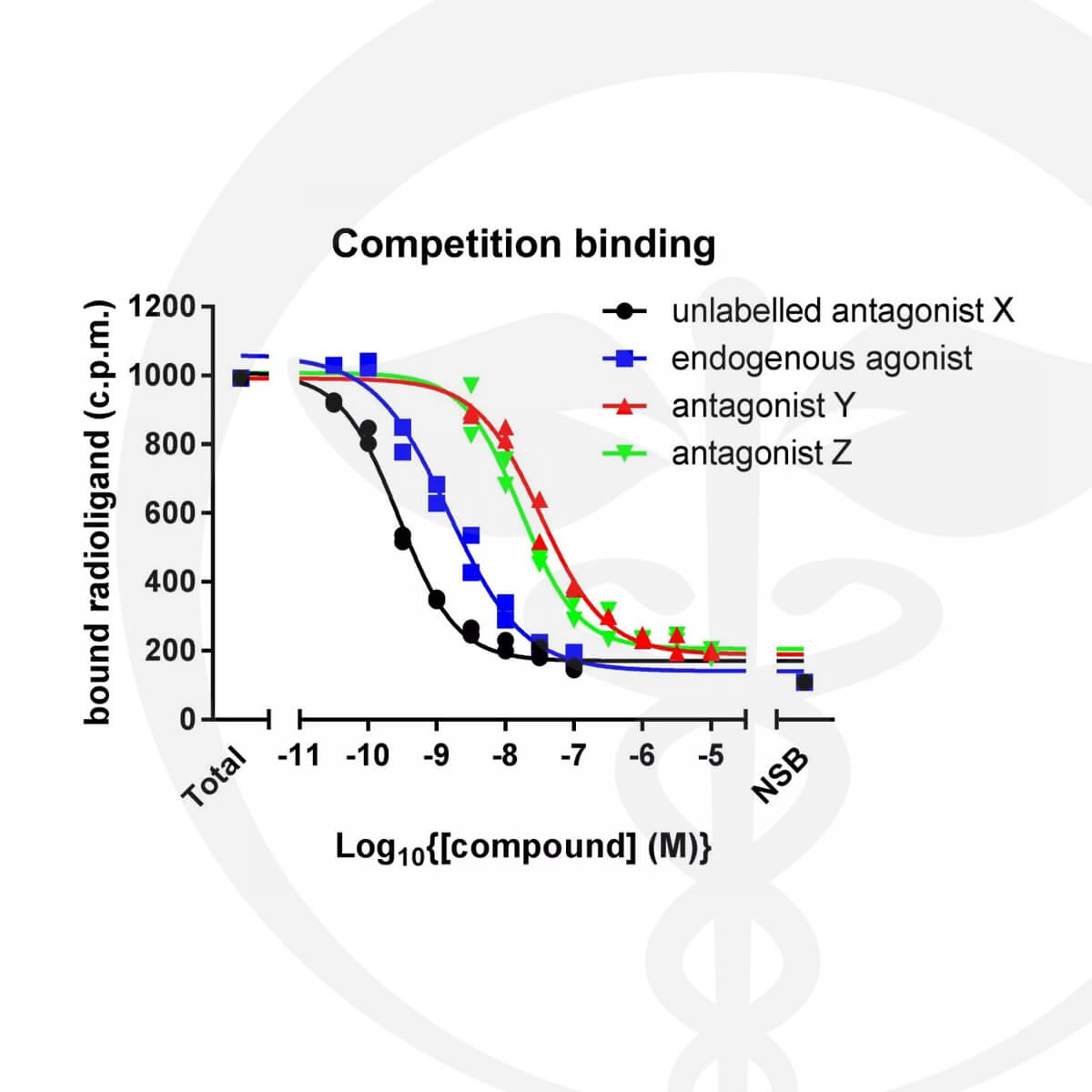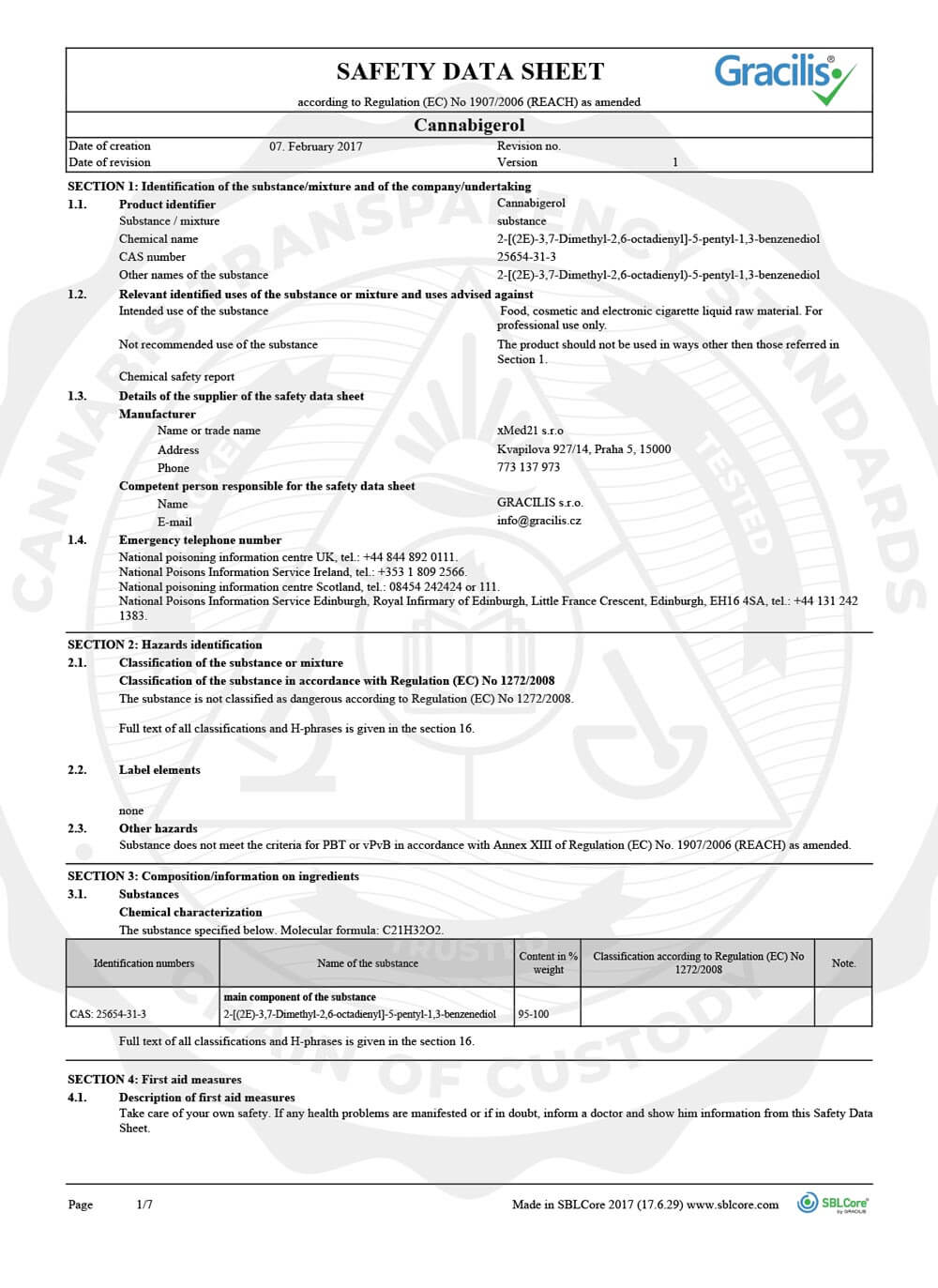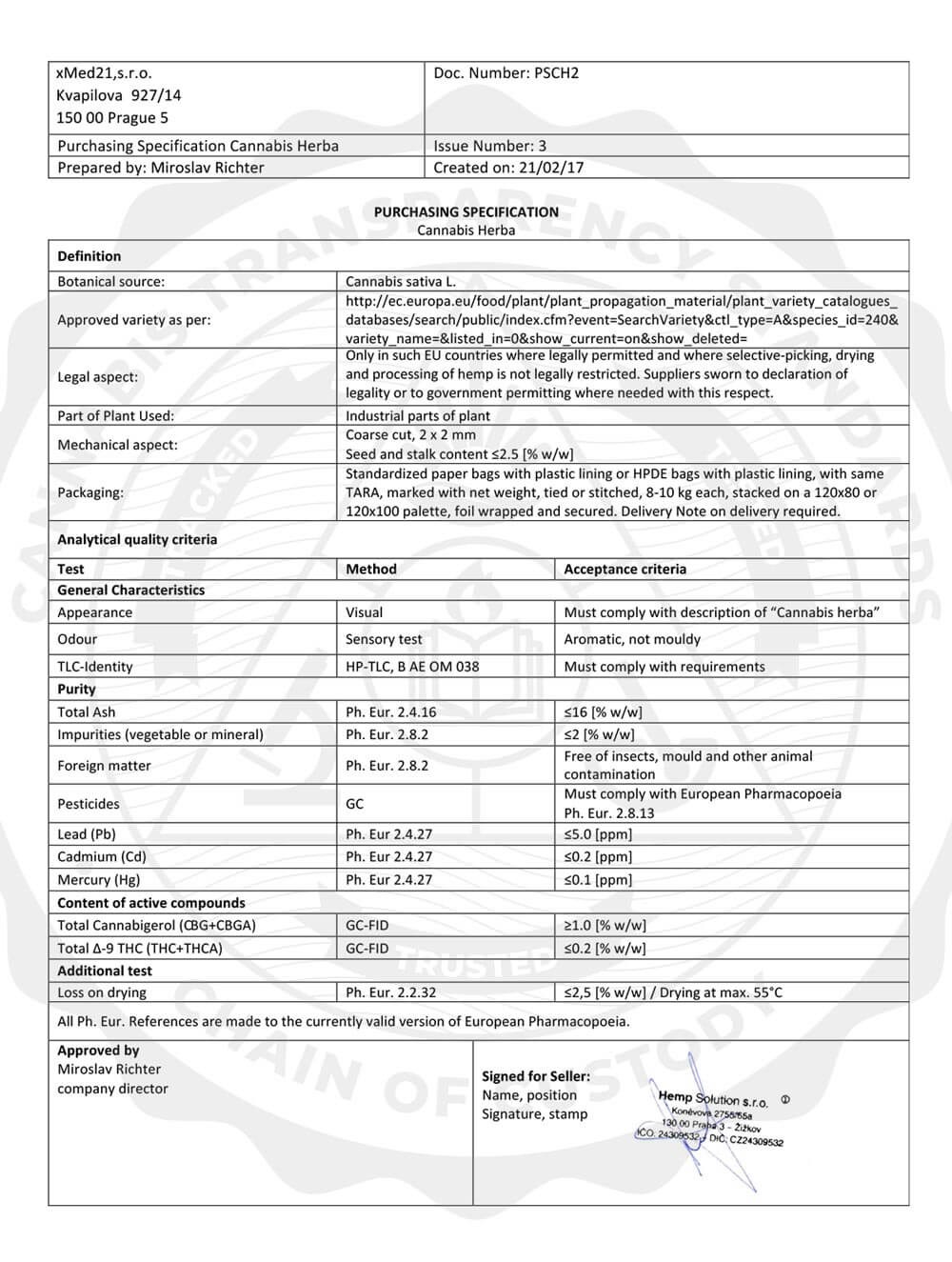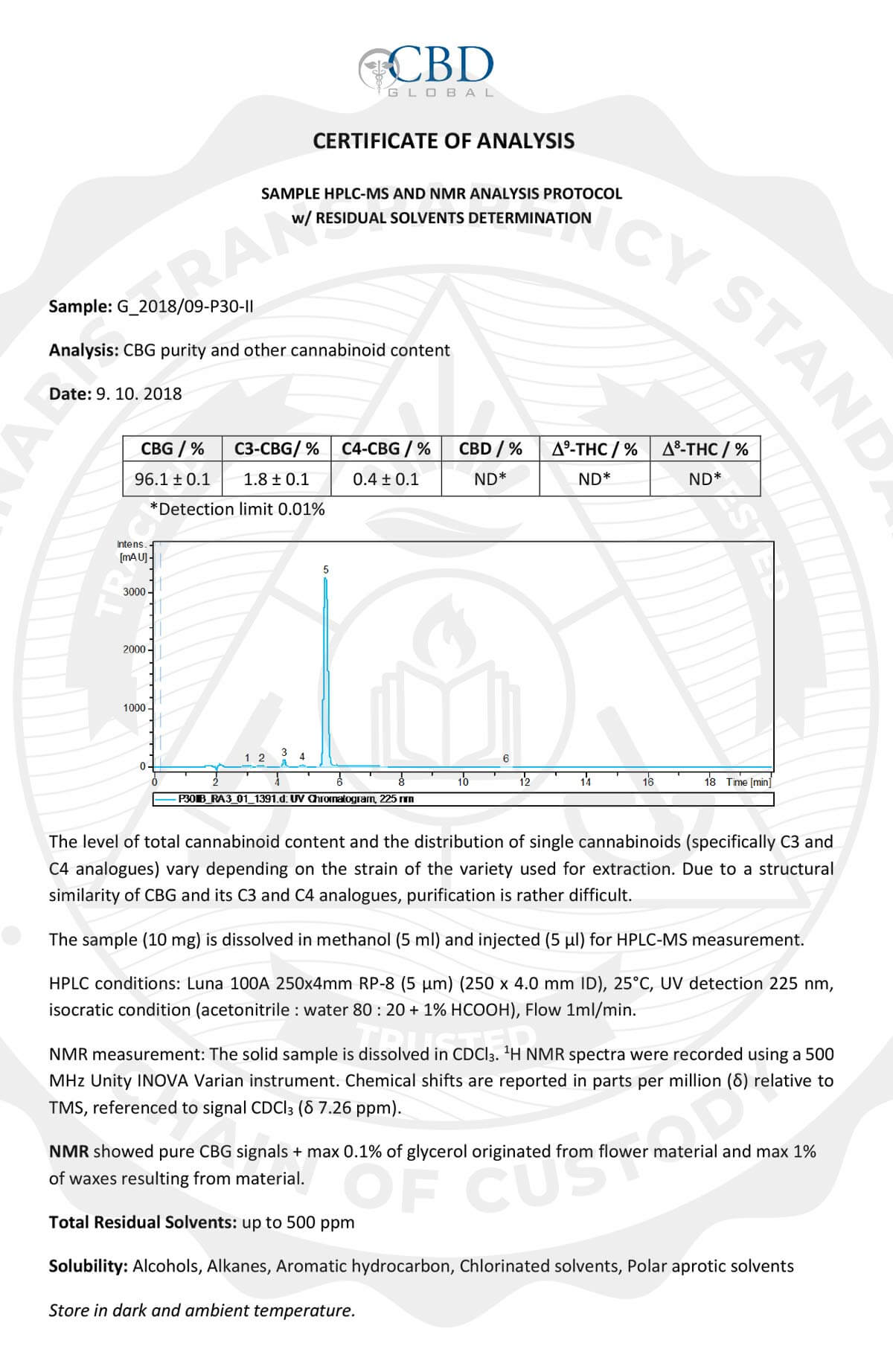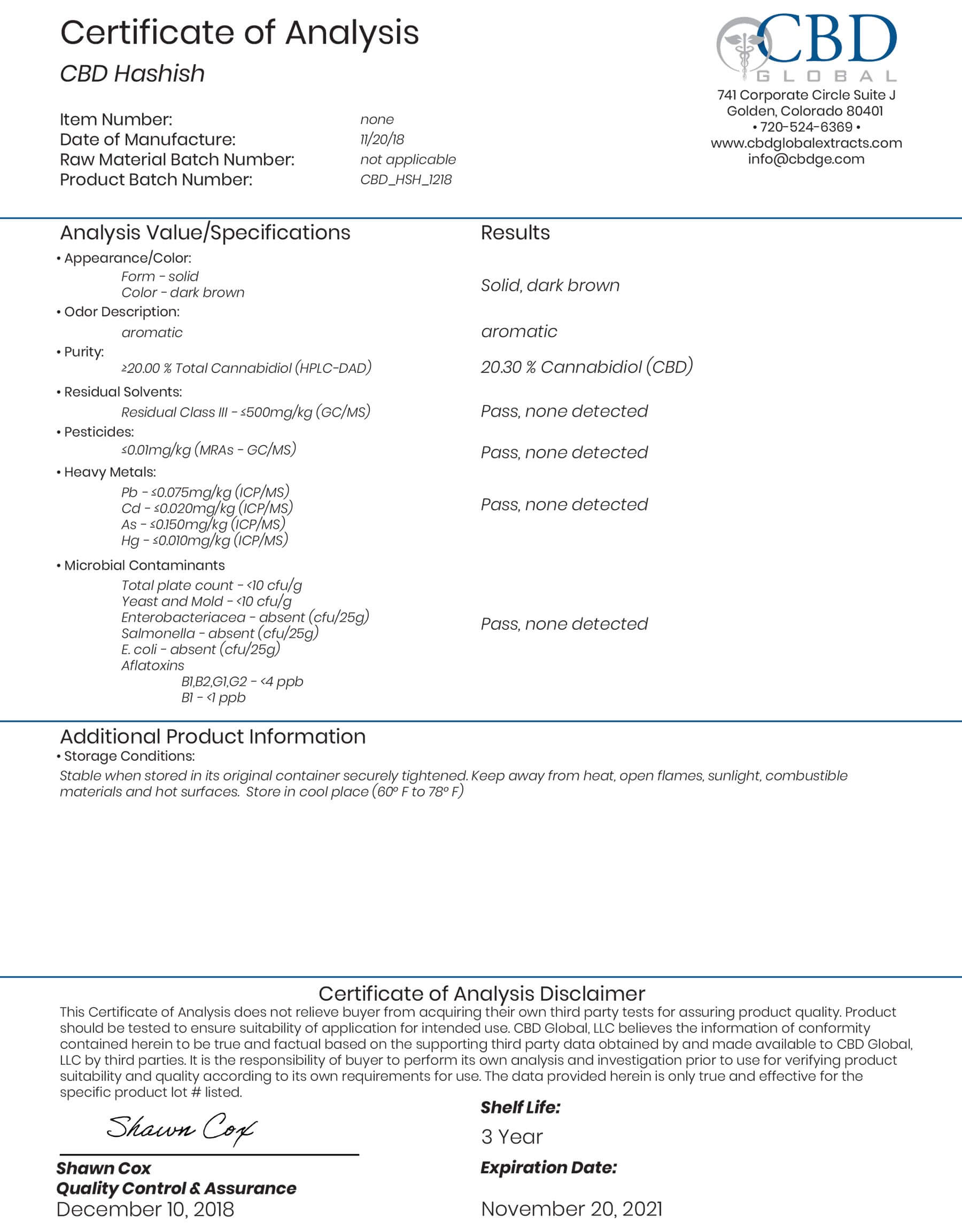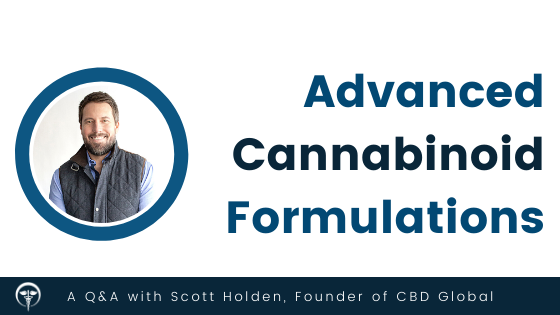
How CBD Global became one of the most trusted sources for highly compliant cannabinoids and advanced formulations
CBD Global’s founder and CEO Scott Holden recently had the opportunity to sit down with Genifer Murray, host of The Cultivate Podcast, delving into topics ranging from advanced cannabinoid formulations to controversial industry terms like “full spectrum”.
The Interview
(This is a computer generated transcript that may contain typos and not perfectly reflect what was said.)
Genifer: Hello and welcome to The Cultivate Podcast. We have a very special guest today. Scott Holden the CEO and Founder of CBD Global, one of the longest running CBD companies in the hemp industry. CBD Global has been in hemp business since 2012. Welcome, Scott. Thanks for coming on.
Scott: Thanks for having me, Genifer. Really happy to be here.
Genifer: Awesome. So let’s talk about how you got into cannabis (hemp)? Your story is phenomenal.
Scott: Yeah, it was an unexpected one and I think that’s true for a lot of people that get into this space. This is certainly true for a lot of the folks that I’ve met in the hemp industry that continue to stick around; they all have their own unique, personal story connected with the cannabis plant.
I come from over 11 years of enterprise software. I worked with an IBM Business Partner for fairly large Department of Defense companies doing audits. After that, I ended up taking the CEO position for a software company and transitioned to cryptography. Shortly after I left my corporate position to take that CEO position, I found out that my father had been diagnosed with a rare form of leukemia, CML. So that was tough like it is for everybody to find that out about a close family member. I did not sleep for weeks and I just kept doing research, looking up every alternative I could find to chemotherapy and radiation.
Our prognosis was about 18 months from when the bone marrow transplant would have to be done. I looked into every alternative, from African root bark to Chinese medicine, anything that you can think of. Through all the research, a lot of arrows kept pointing back to cannabis. There was already an overwhelming amount of information about cannabis and cancer available, far more than I had realized.
So then I opened the conversation with my father. It took a long time. Eventually, he came around and said “I’m willing to give this a shot.” My father had to work so I needed to make sure that we found something that was non intoxicating for him. That’s why I looked for the non-THC solutions. And also because the research I had done had shown that the concentration of CB2 receptors were predominant on bone marrow, within the bones and the internal organs. So that’s why I looked into CBD. We ended up getting our hands on a very, very potent strain and first phase extraction. It was over 75% CBD and only around 2% THC. And this was before anyone even heard about Charlotte’s Web!
Using this strain, along with potent botanicals, I started formulating a product for my dad. And it worked! He still takes that formulation every single day in the evening and morning. He’ll tell people what his experience was and what happens when he doesn’t take it now.
Eight years later, he’s the happiest and healthiest he’s ever been! And it’s the biggest blessing my family could ever have. Since then that first formulation has evolved in very big ways. And we’ve even gone out and customized them for very different forms of conditions that people have.
Genifer: So what product does he take? What is the maintenance?
Scott: He takes a high potency sublingual dropper under the tongue. He has two different formulations, and the cannabinoids are concentrated differently. That’s one of the things that CBD Global specializes in, target response high potency formulas. We formulate with very high concentrations of cannabinoids in a tiny 10ml bottle. There’s over 3000 milligrams of cannabinoids in each bottle, as well as potent botanicals.
I’m not promoting that every situation calls for that high of a dose of cannabinoids. In some cases, it is best, and in others, it’s not. In this particular case, the combination of terpenes, cannabinoids, and potent botanicals we use are all very much oncology-specific and at high doses.
We also have a series of botanicals in this formula that actually grow next to our cannabis farms in Prague. The groups that we work with have glass walls the size of a couple of football fields stacked with red algae growing, which produce one of most powerful antioxidants on the planet. There’s a whole list of things that go into our high potency sublingual drops aside from the cannabinoids.
Genifer: That’s why I’m talking today because you have set yourself up so differently than every other CBD company. You’ve taken a scientific approach from the very beginning and focused on formulation, R&D, and quality. Your farms are heavily regulated, you work with universities, etc.. So let’s talk a little bit about that.
Scott: Before the company was even incorporated, I knew I wanted to focus on research because that’s really what started it; not sleeping and doing research. I needed access to facilities and to people who were smarter than me. So I started picking up the phone and calling people. And the first place I started was my alumni. I called the professors at the University of Colorado where I went to school. I studied in the biology and biochemistry department there.
Very quickly, I met Nolan Kane, Dr. Ken Hutchinson, Daniel Vargas, Bob Seavers, and the list goes on. I started studying what they were doing and it evolved in a lot of different ways. I started to find locations where we could do genome sequencing and we established the sequence of several different species of cannabis plants. From there, I wanted to identify where the labels that the genes of interest in cannabis were located and we did. We identified the location of several of the primary cannabinoids and what their amino acid sequences were. A lot of that research came out of Israel. Once we could find them, then we could manipulate them.
I want to be clear about something: I am okay with genetic engineering tools. There’s a big misconception in the population where anything that touches the genes of a plant means GMO. That’s actually not how GMO is defined. It has to do with the introduction of transgenics. And that means foreign DNA that codes for something. Manipulating DNA, identifying the red and green light on and off switches are things that you can still do within the genome. And it’s not considered GMO because it does not program for something unnatural to the plant.
We ended up using CRISPR technology that would allow us to potentially amplify certain expressions of cannabis phenotypes and turn off the expression of others. And the one that I was most interested in was shutting off THC synthesis. So that was a project that started very early on and it took a lot of time…
Genifer: What is CRISPR technology?
Scott: CRISPR technology is kind of like caste nine as it allows you to work with certain plasmid vectors, which in biology will be used to insert themselves into a genetic sequence. That’s how you introduce foreign DNA, but what we can do with CRISPR is actually go in and cut out a gene. And so we can remove the expression of the THC synthase sequence, and the organism will express like it normally would, just without that phenotype. So that would allow us to have very high producing non-intoxicating cannabis strains and it would lower the acquisition cost of these API’s, active pharmaceutical ingredients. We wouldn’t have to go through as much of the post processing like THC remediation. Remediation didn’t show up into the cannabis industry until 2016 and we were looking at overcoming this back in 2013.
There’s a lot of research that’s been done since and it’s still very difficult to penetrate those cannabis cell walls. So doing anything with that plant from a genetic standpoint is not as easy as your model organisms like tobacco or other things that are commonly used in genetic engineering. The cannabis species is an extremely brilliant plant. There are those who think it’s not from this planet. It does not behave like other organisms. It’s very intelligent. It seems to hold epigenetic memory from prior generations and it can respond accordingly into new environments.
So that project has evolved to this day, but apart from that, I was interested in patient monitoring, blood analysis, etc. These are all really important topics because what I didn’t want to do was just arbitrarily make things and throw them at people without knowing if they worked or not.
Genifer: Where was this cannabinoid research being done? How has it evolved and impacted your formulation philosophy?
Scott: This was all done before the Farm Bill. In the United States, you were very limited on the type of human studies that you could do, and most of it still comes from animal studies, so there’s a lot of benefits that I got from working out of the country back then. There was still no cultivation in the United States. I didn’t have a choice but to go abroad. China was the first place, and I’m very comfortable admitting it. They are still the world’s largest producer of hemp. Their landmass is huge and they’ve been doing it for a long time. You can find quality hemp in China, but there are also a lot of synthetic and contaminated cannabinoids being imported from there as well. We quickly found that out. I didn’t trust anything from China and I had good reason not to, because when we did testing, we found a lot of problems.
The first history of the CBD industry is interesting, and unfortunately, it does have a dark history. A lot of nefarious individuals were involved in the first imports coming into the country. And most people don’t know this, but the very first CBD isolate to enter the market was a synthetic! We’ve even done tests on it, to look for residue biomarkers to show people how it is possible to test between the synthetic and natural cannabinoids.
That aside, the main reasons we left China was because they have no environmental laws, or labor laws, etc. I couldn’t get the documentation that I needed or wanted. And it was extremely important to me, not just because of the foresight of knowing that this industry was going to be grabbed by regulators, and it was going to be a tough process to figure out how we are going to regulate this to begin with. It mainly had to do with the fact that the first person that I was helping was my father and he had a compromised immune system. And so that set the stage for everything that I did from that point forward. Anything that I did or the ingredients I used needed to be scrutinized. So the materials that we’re using in our CBD formulations to this day, we test and make sure that we’re always providing something that’s clean and safe.
We ended up landing in Prague in the Czech Republic, and it was a great place to land because the group that I work with there, which is still to this day my current exclusive partnership, operates out of the Academy of Sciences, Institute of Chemicals and Fundamentals. They are a university and had a Schedule 1 controlled substance license. So they’re very, very tightly organized with the authorities out there and our lead lab manager is the deputy of chemistry at the Institute. He is the point of contact for their Ministry of Health; they’re the DEA equivalent and anybody who wants to do extraction in that country needs to have his signature on their application.
I spent a lot of time, helping them to establish a chain of custody documentation in order to get it set up in a manner that would protect us in the future. And that was the inception of what today is operating as Cannabis Transparency Standards!
Genifer: You can go to CBDGlobalExtracts.com and CannabisTransparency.com to see just how transparent CBD Global is. I mean, just the information you’re sharing today, you know, people barely share, right? CBD Global share’s their health and safety test results, not just your potency levels and so much more. You also created this seal of approval, if you will, back in 2014 to ensure people knew they found a tracked, tested and trusted CBD product on the market.
Scott: Yes, the CTS seal ensures that everyone knows they found a premium product that is consumer safety-tested. CBD Global product inventories are coded with batch numbers that follow all raw materials from the point of seed purchase, to harvest, and through the manufacturing life cycle. Every checkpoint of compliance and quality control is validated, documented, and made available to the public on cannabistransparencystandards.com. We believe, considering many consumers of the various cannabinoids found in cannabis, are fighting serious illnesses, it is morally incumbent that product manufacturers source the cleanest and most responsibly manufactured cannabinoids (CBD, CBC, CBG, CBN, etc.) available.
Genifer: When did you start working with CBG?
Scott: We brought CBG (Cannabigerol) to the US market in 2015, very early on. Just last year in 2019 people really started talking about it in the United States. And it’s interesting, and unfortunate, the market flooded with CBD-focused products and now CBD companies are asking, what else can we monetize? While there’s a great deal of people and companies who want to use these cannabinoids for their therapeutic benefits as well, the problem is, people made very tough economic decisions early on in their product development strategy, everybody raced to the bottom on price without any other differentiators in their CBD product line. We ended up in this market, where everyone was building the bedrock of their marketing campaigns around just CBD, and I’m going to say this, this is actually a bad word in our office “full spectrum”.
We don’t use the term “full spectrum” because if it has too many different meanings; there’s no one standardized meaning. That’s a problem because when you communicate between vendors and customers, clients and consumers, everyone uses the term but nobody knows exactly what “full spectrum” means to each individual…so how do you know what you’re getting if everyone calls it something different?
Anyways, we brought CBG to the market but very few people to this day use it in their formulas as most of the industry still focuses on “full spectrum CBD” because it’s a buzzword that sells products and a lot of consumers still think it’s the best you can get.
For CBD Global, CBG is one of the first other cannabinoids in order to start the path of pursuing what we call Target Response Formulations™ with controlled spectrum. Controlled really just means that we’re standardizing these products, so you get the same exact thing every time. I’m not saying these are just a combination of isolates either, we absolutely work with the whole plant as a base, and then we analyze it, and we build on top of that, and we standardize the ratios of cannabinoids and terpenes.
Genifer: Why is it important to work with cannabinoids this way?
Scott: Different endocannabinoid receptors don’t work the same and the cannabinoids don’t bind the same. So you have positive allosteric modulators, negative allosteric modulators, neutral modulators, and verse modulators. When you add cannabinoids together, they interact differently depending on the concentration and which ones are present. Without paying attention to this, you may be putting things into your product that are having a counterproductive response.
One of the best examples of this in the current context with the interest in CBN. CBN is getting a name for itself these days because of its potential effects for sleep, CBD can actually hinder CBNs activations. A lot of times THC and CBD help with certain things, but it’s not true that it helps with everything, especially when combined. So there’s situations where cannabinoids don’t always help each other and studying that is crucial. There’s instances where it absolutely does (THC in small amounts can very much activate the effects of CBN). There’s a lot more research that needs to be done, but there’s enough out there that is and can be utilized by manufacturers for formulation. And that’s what we focus on.
Genifer: That’s a key because very few of these companies are doing research, other CBD companies, and like you said, they didn’t really think about how they’re going to set themselves apart. So It’s so confusing for the consumer and it makes me very upset. I do want to talk a little more about how CBD Global offers other cannabinoids in bulk, as well as private label and white label, like CBD, CBGA, CBC and CBN.
Scott: Yes, CBD Global offers all the minor cannabinoids in bulk. CBC is a new one, very recently we’ve isolated that. So yeah, CBG we had in 2015 and CBN followed shortly after. CBG came into the market recently because farmers heard buzz about the demand for CBG, and wanted access to something new that they could sell but the amount of acreage that people grew was astronomical. And they didn’t have outlets or distribution for it. Everyone thinks build it and they will come. And now what we see happening with CBG is the exact same thing that happened with CBD when I first sold CBG I mean, the very first kilos were selling for $60,000 now it’s under $10,000. I sold CBD for $60,000 a kilo way back when it started. Yes, now, it’s under $1,000. Of course, every cannabinoids’ pricing is going to come down to a price that stabilizes based on supply/demand.
Genifer: I want to talk about hot topics, nano, and water miscibility, what does that actually mean? Now everyone thinks, they know what those two things are, but not many companies are really doing it and just using the words for marketing purposes. So can you kind of talk about those two things?
Scott: Water miscible is the proper term that should have always been in place of “water soluble”; these molecules (cannabinoids) are not soluble in water. Cannabinoids can be suspended within water after an emulsification process, which is your typical application that’s being used in the cannabis space. And so people want to figure out how to get cannabinoids into water-based solutions for a few reasons. Cannabis manufacturers want to make products that are water-based, cannabis drinks and topicals, things like that.
Unfortunately, people are applying the word nano to their marketing and in most cases it is anything but nano. The term “nano” is often used as a buzzword to describe simple micro-emulsions. Nano is defined by the FDA, the scientific community, as anything under 100 nanometers in size, to give some context, the average cannabinoid cluster is about 2000 nanometers in size. The nanotechnology that CBD Global uses, that is not in emulsification, allows us to obtain a particle size of less than seven nanometers. Almost breaking the Pico meto threshold, we don’t have any interest in even trying to go lower because at our particle size, this technology has the ability to penetrate any cellular membrane in the body.
Genifer: So CBD Global’s nano technology can increase both the bioavailability and bioefficacy of cannabinoid delivery, which people don’t talk about a lot of space or understand the difference between the two terms. Can you elaborate?
Scott: So bioavailability is the absorption rate. Bioefficacy is what its mode of action is once it gets into the body. Absorption has nothing to do with the effectiveness of CBD once it gets into the body in most cases, especially if you’re ingesting an edible, a lot of times these molecules are ripped apart, and the lipophilic molecules go right back to aggregation. They get metabolized and processed like anything else.
Genifer: Why is the particle size important when consuming CBD or other cannabinoids for that matter?
Scott: That particle size is extremely important. Because if you have a very clean product, you can get total absorption into the body within 30 minutes. And you’re not just confined to the areas that are being absorbed, say in a topical, targeted location or ingestion where it’s going through the liver and being processed.
The big difference between other nanotech and ours, we have a final step that actually will lock in the particle size and keep it from going back to its original size. The particle size is so small; you’re now dealing with a math equation which is basically a calculation of surface area. The best analogy I can come up with a nanometer is to a meter as a marble is to the size of the Earth.
We use our nano technology so that the water acts as a Trojan horse, and helps your body absorb more cannabinoids like CBD quickly. And, you know, it’s a very quick mechanism of action, and people have had all kinds of great experiences using our True Nano Water™.
Genifer: So I think what people are wondering out there is: “how do I afford your products?”. With all the studies, all of this research, the ingredients, the quality, and all that you’ve done to come up with all of your formulas. What are your prices like?
Scott: Our prices are competitive. The thing that’s allowed us to really control our cannabinoid prices is the fact that our supply chain is vertically integrated. And so we have exclusive relationships all the way from seeds in the farm, to the farms that grow our genetics and crops that we utilize. And so that’s all processed in Prague in the Czech Republic and additional raw materials come to CBD Global in the United States.
We manufacture products for other companies, and then we make our own products as well. We do work with other companies in the United States in a number of capacities. A lot of our relationships are mutual. We have customers who sometimes are vendors and vendors who are sometimes customers. But we have very strict requirements for people that we do work with in the United States. And only until last year, were we able to start getting companies to the point where they could fulfill the documentation requirements that we demand of anything that enters our building.
For more information please visit CBDGlobalExtracts.com or email us to learn more info@cbdge.com.




